Last night I attended the forum, “Building and Sustaining a Vibrant Community” held at Hubbell Hall in the Kent Campus Center of Simpson College here in Indianola, Iowa.
Indianola mayor Kelly Shaw introduced the panelists, Fairfield mayor Ed Malloy, Kari Carney, Executive Director of 1000 Friends of Iowa, and Ryan Waller, City Manager for Indianola.
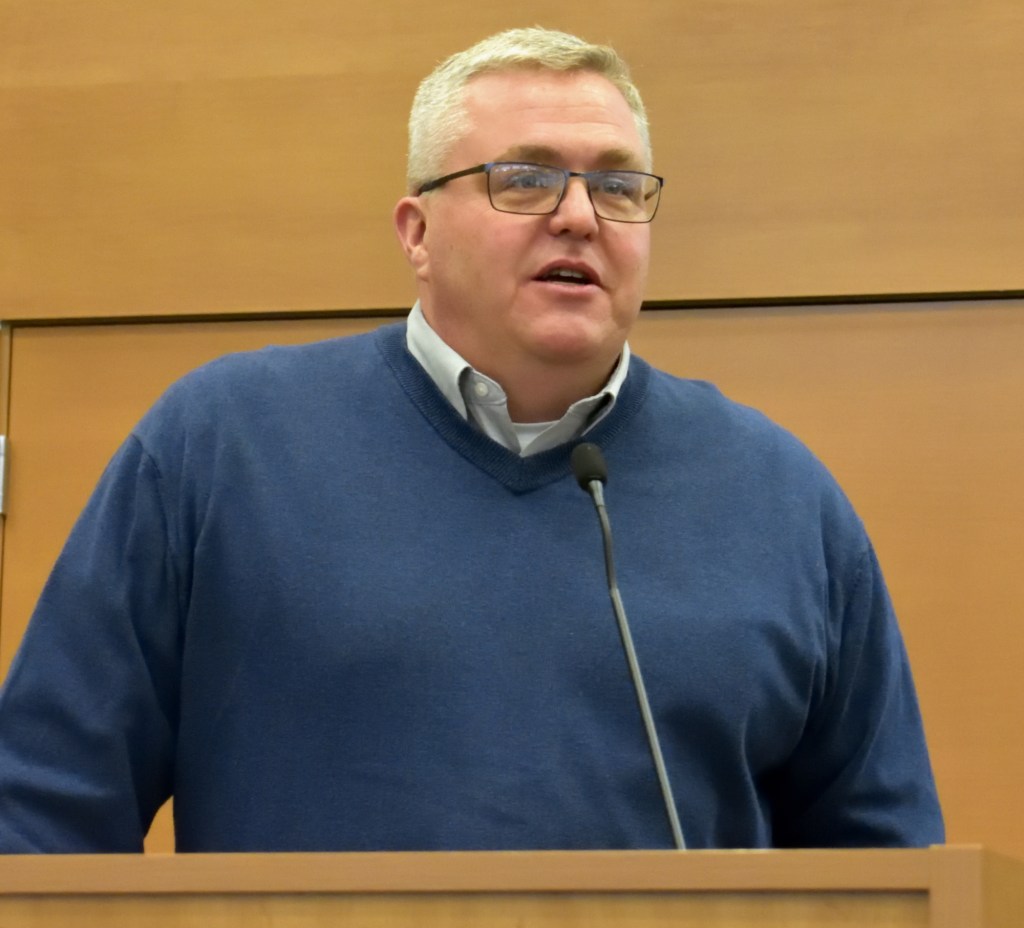
I was really surprised and glad to hear so many ways Iowa towns and organizations are actually implementing a wide variety of sustainability projects. There were so many projects and ideas, I can only summarize the high points.
Fairfield, Iowa, mayor Ed Malloy, was selected as one of 15 green-leaning mayors in the country by Grist magazine in 2009, and I can see why after his remarkable presentation.
In November, the city fathers in this liberal southeastern Iowa outpost unanimously adopted a Green Strategic Plan. Their vote was more than ceremonial: they also secured a state-funded grant to hire a sustainability coordinator, inventory their greenhouse gases, and create educational materials for residents. The new plan envisions everything from conserving energy to supporting local farms. Malloy, who’s been mayor since 2001 and heads up a local oil company, says the environment-economy connection is clear. He hopes Fairfield’s ideas will catch on: “We want to create a model community, a virtual template that other small towns can adopt to create the same results.”
15 green-leaning mayors, Grist, Grist staff, Ma 2, 2009
He said patience is important. When he first suggested his sustainability ideas to the city council, they didn’t want to do it at the time. In 2008 when oil prices surged, the council was ready to begin strategic planning for sustainability. The three goals were to create a sustainability culture, green jobs, and sustainable community design. You can find the Fairfield Go-Green 2020 Strategic Plan here.
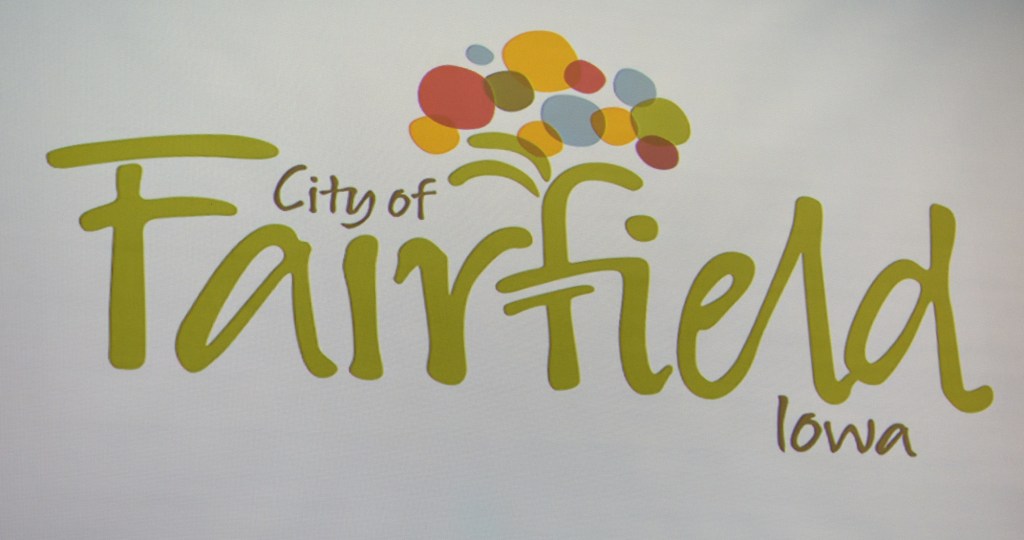

Fairfield mayor Ed Malloy 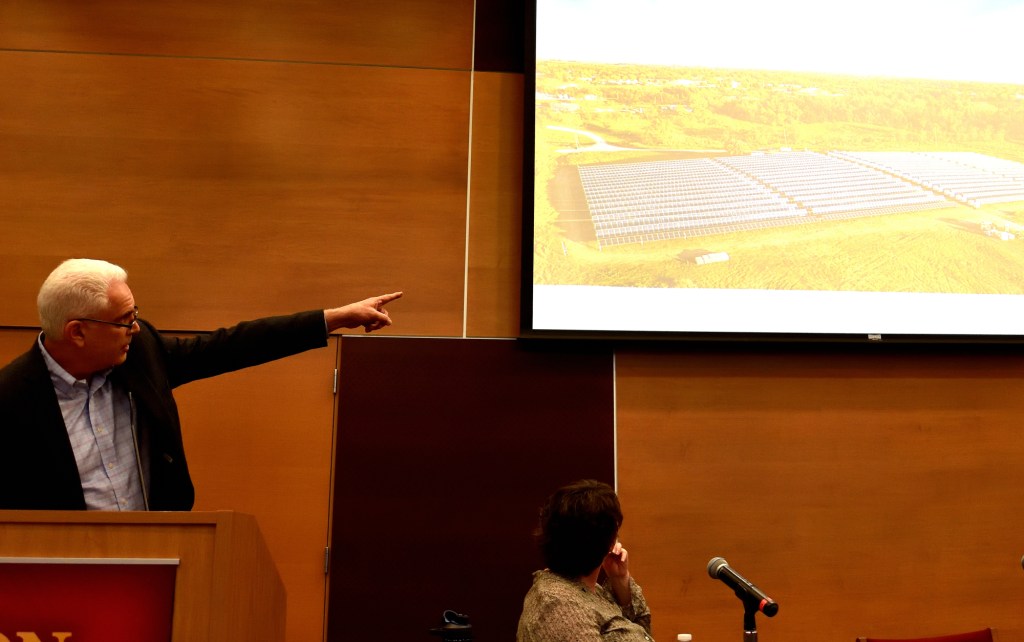
Fairfield solar field
It is important to make everyone feel included, to create a culture of sustainability. The Maharishi School is very involved in this work in Fairfield. Middle school students work on energy conservation and in the food garden. Early in the process Fairfield invested in solar energy. No tax money was involved because three solar companies developed in the city. When the banks in town noticed return on investments and energy savings, they installed their own solar panels. 160 fruit trees were planted with the help of Green Iowa AmeriCorps.
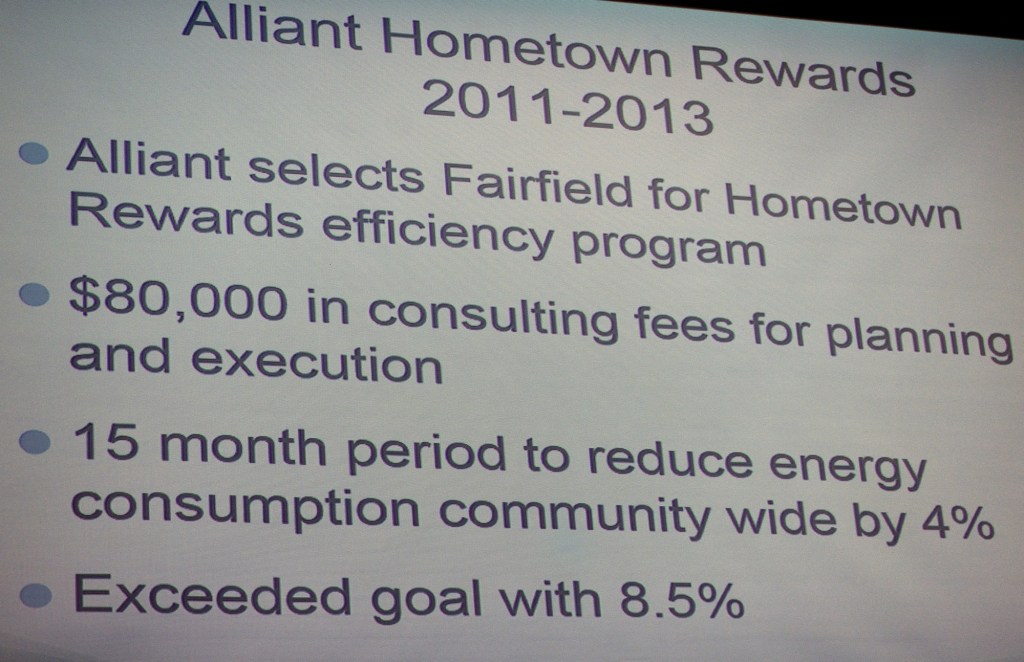
As seen above, Alliant Energy select Fairfield for its Hometown Rewards from 2011-2013. There is a storm water project and the development of wetlands and trails. A four day boot camp is offered for entrepreneurs for local food initiatives.
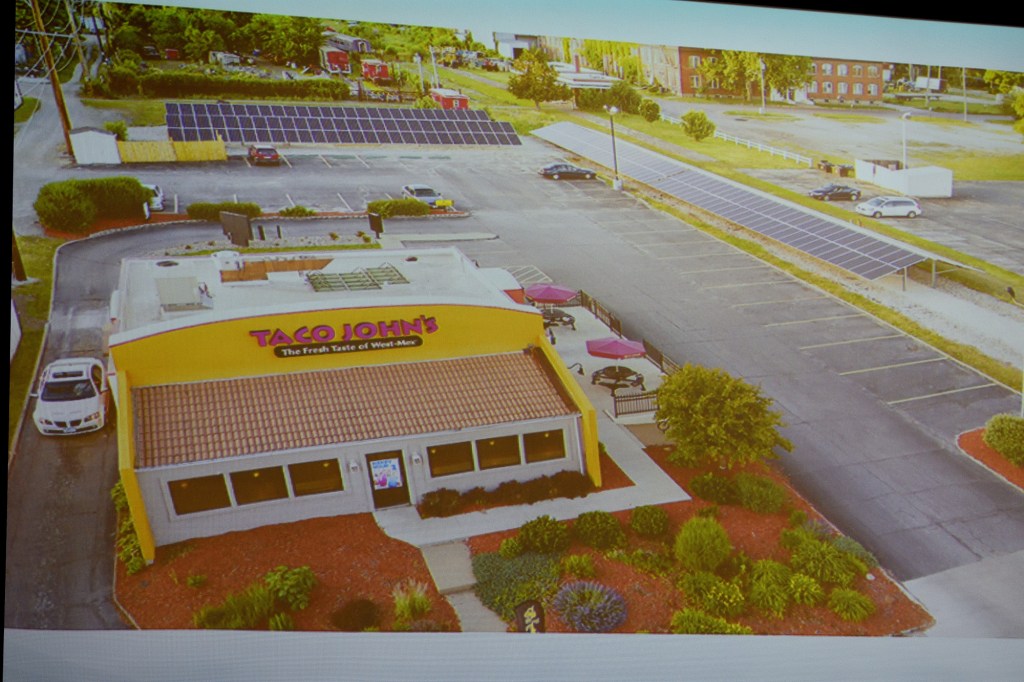
Next to speak was Kari Carney, Executive Director of 1000 Friends of Iowa, which focuses on land use and redeveloping small town communities. She talked about the revitalization of Charles City and Storm Lake, Iowa.

She described how, after flooding of the Cedar River in 2008, Charles City decided to rebuild with affordable, net zero residences, with a price cap and requirement that a certain number of the new residences go to families with lower incomes. You can see documentation of this project here.
Apartments are built around solar panels and a geothermal energy system. High efficiency appliances, using recycled building materials, and permeable pavers are some of the features.
Storm Lake is the single most diverse city in Iowa, where 80% of the school children are non white. 18 languages are spoken. The city has chosen to embrace immigrants. Wetland development reduces water runoff and filters the water. High school students work in a 5 acre field of edible plants for food security.
Bloomfield has a population of 2,000 with a high incidence of poverty. A plan was developed to reach 100% energy independence. Old apartments are renovated with green building materials and high efficiency appliances, built with local labor. People from Green AmeriCorps did energy audits of all homes, and replaced all light bulbs with energy efficient ones. Renters are given loans so they can take advantage of programs for energy efficiency, which are usually just available for home owners. Solar fields supply 16% of all electricity, and 100% of power for municipal buildings.
Ryan Waller, Indianola’s City Manager, spoke about a few of the many things the city is doing to build vibrant and sustainable communities. He focused on two things, evaluation of municipal buildings and services, and the downtown square assessment and plans.
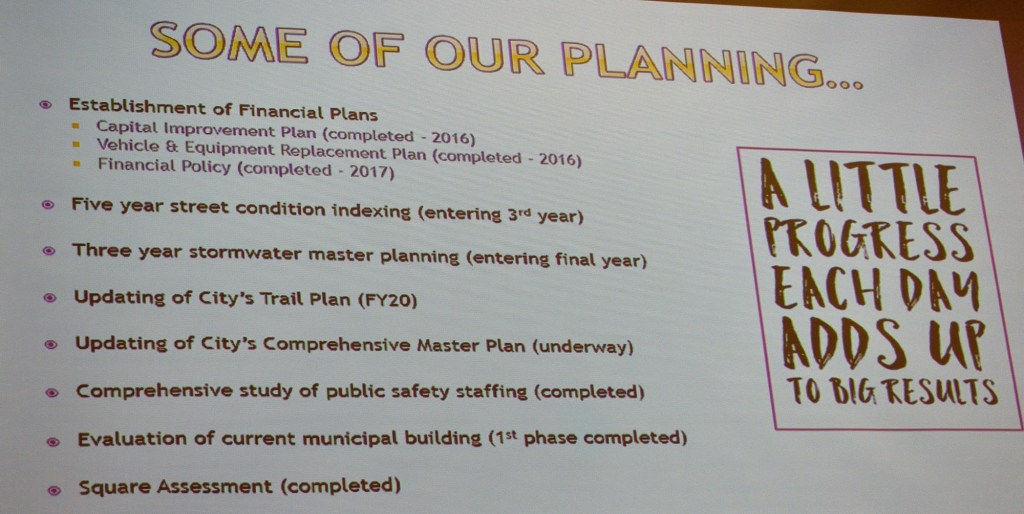
When community planning was developing, there was really high community engagement, with great input, and which also provided a great deal of data to plan from. Recommendations included changes in zoning for more retail development, attention to programs such as parades, events, and RAGBRAI, which includes a stop in Indianola this year.
One of the main efforts is to continue to build on the connection of the downtown square with the Simpson College campus. Working on signage, and creating more greenspace should encourage more walkability. There a plans for streetscape, to encourage the flow of traffic from Jefferson Street/Highway 65 to the square.
Municipal building and services assessment found inefficiencies in overlapping services, and understaffed police, fireman and medics. Plans are being made to increase staffing and efficiency of safety services.
This was a fascinating event with a lot of great material. So much of this represents implementation of parts of a proposed Green New Deal. I especially liked the parts relating to a just transition, focusing on those with lower incomes. And the synergy between cities and schools was clearly shown in many different ways.
